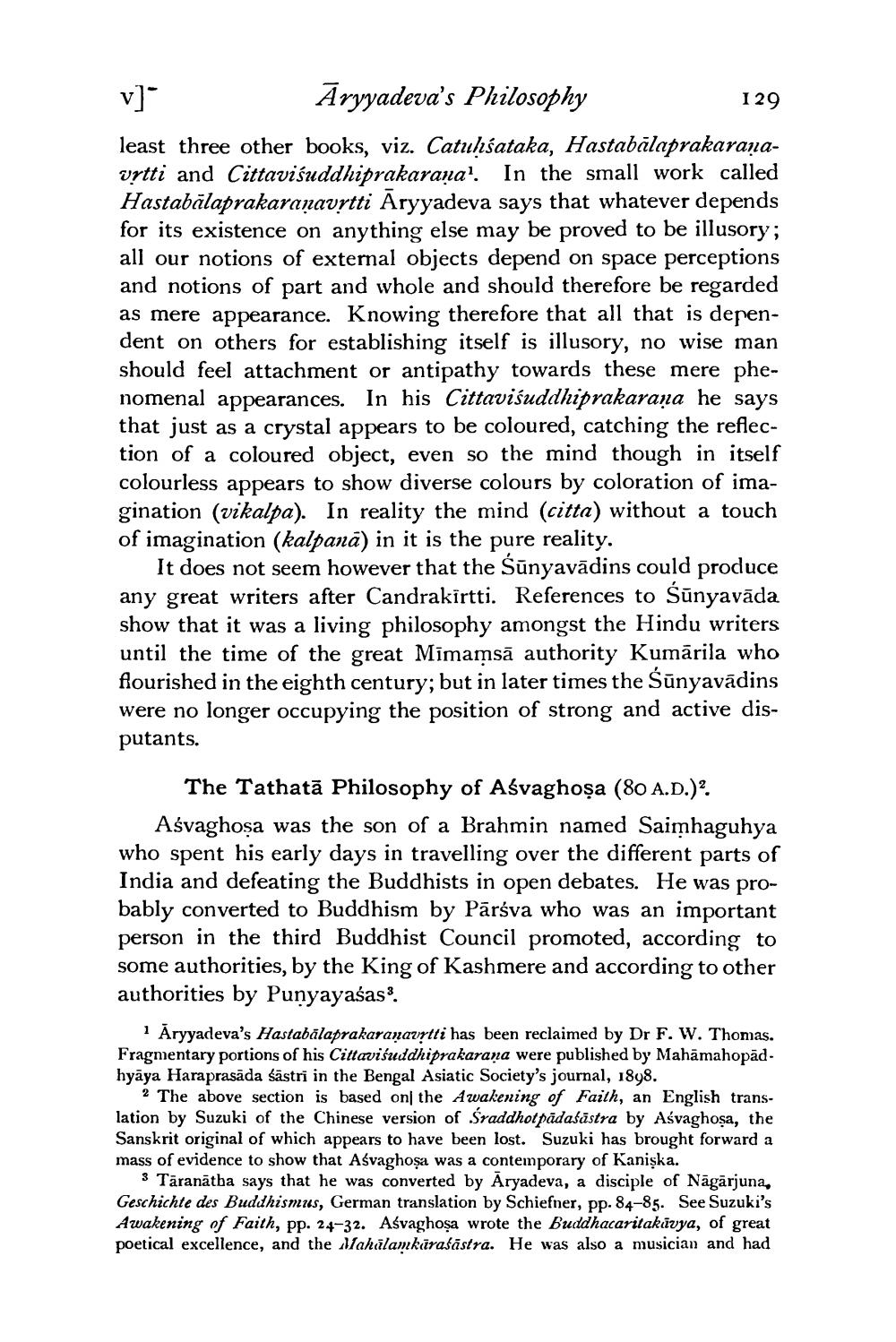________________
v]" Aryyadeva's Philosophy
129 least three other books, viz. Catuhsataka, Hastabālaprakaranavrtti and Cittavisuddhiprakarana'. In the small work called Hastabālaprakaranavrtti Āryyadeva says that whatever depends for its existence on anything else may be proved to be illusory; all our notions of external objects depend on space perceptions and notions of part and whole and should therefore be regarded as mere appearance. Knowing therefore that all that is dependent on others for establishing itself is illusory, no wise man should feel attachment or antipathy towards these mere phenomenal appearances. In his Cittavisuddhiprakaraṇa he says that just as a crystal appears to be coloured, catching the reflection of a coloured object, even so the mind though in itself colourless appears to show diverse colours by coloration of imagination (vikalpa). In reality the mind (citta) without a touch of imagination (kalpanā) in it is the pure reality.
It does not seem however that the Sūnyavādins could produce any great writers after Candrakirtti. References to Sūnyavāda show that it was a living philosophy amongst the Hindu writers until the time of the great Mīmamsā authority Kumārila who flourished in the eighth century; but in later times the Šūnyavādins were no longer occupying the position of strong and active disputants.
The Tathatā Philosophy of Asvaghoşa (80 A.D.). Aśvaghoṣa was the son of a Brahmin named Saimhaguhya who spent his early days in travelling over the different parts of India and defeating the Buddhists in open debates. He was probably converted to Buddhism by Pārśva who was an important person in the third Buddhist Council promoted, according to some authorities, by the King of Kashmere and according to other authorities by Punyayaśas:.
Āryyadeva's Hastabālaprakaraṇavrtti has been reclaimed by Dr F. W. Thomas. Fragmentary portions of his Cittavisuddhiprakarana were published by Mahamahopäd. hyāya Haraprasada śāstri in the Bengal Asiatic Society's journal, 1898.
2 The above section is based on the Awakening of Faith, an English translation by Suzuki of the Chinese version of Sraddhotpādaśāstra by Aśvaghoşa, the Sanskrit original of which appears to have been lost. Suzuki has brought forward a mass of evidence to show that Asvaghoșa was a contemporary of Kaniska.
3 Taranātha says that he was converted by Aryadeva, a disciple of Nāgārjuna, Geschichte des Buddhismus, German translation by Schiefner, pp. 84-85. See Suzuki's Awakening of Faith, pp. 24-32. Ašvaghosa wrote the Buddhacaritakavya, of great poetical excellence, and the Nlahālamkiraśāstra. He was also a musician and had




